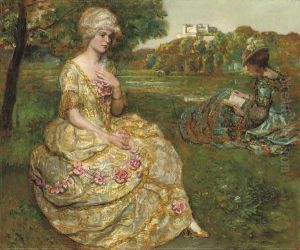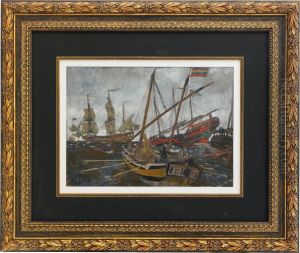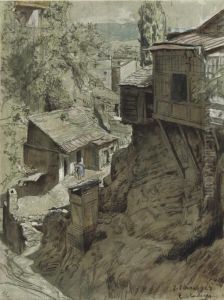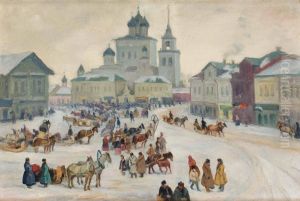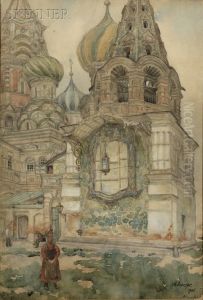Evgen'Evich Lansere Evgenii Paintings
Evgeny Evgen'evich Lansere, also known as Eugene Lanceray, was a Russian graphic artist, painter, sculptor, mosaicist, and illustrator, belonging to the artistic Lansere family. Born on August 23, 1875, in Pavlovsk, Russian Empire, he was part of a generation of Russian artists who were active during a period of great change, which included the Russian Revolution and two World Wars.
Lansere was born into an artistic environment; his father was an architect and his mother was a painter. His siblings also pursued the arts – his brother, Nikolay, was a sculptor and his sister, Zinaida Serebriakova, became one of the most notable female Russian painters. This environment undoubtedly influenced Lansere's artistic development, and he was exposed from a young age to both the technical and aesthetic aspects of art.
He studied at the St. Petersburg Academy of Arts under Ilya Repin and at the studio of Princess Maria Tenisheva. Lansere was also influenced by the Art Nouveau movement and was associated with the World of Art movement, which sought to elevate the decorative arts and reconnect with the spirit of Art Nouveau. He was particularly known for his graphic works and book illustrations, which often featured historical and folklore themes. Lansere's illustrations for Russian fairy tales and other literary works are celebrated for their intricate detail and expressive characters.
Aside from his graphic art, Lansere was a talented sculptor, and he worked in various materials, including bronze. His sculptures often depicted historical figures and animals, characterized by their dynamic forms and expressive movement.
During the Russian Revolution, Lansere embraced the Bolshevik cause and contributed to the promotion of Soviet art, designing propaganda posters and participating in the creation of monuments dedicated to the new regime. Despite the political turmoil and the strictures of Soviet art policies, he managed to maintain a degree of artistic freedom and continued to produce work that was both personal and reflective of the times.
Lansere's career spanned both the pre-revolutionary and Soviet periods, allowing him to witness and document through his art the tumultuous changes occurring in Russia. He died on September 13, 1946, in Moscow, leaving behind a diverse and influential body of work that continues to be studied and appreciated for its historical and artistic value.
